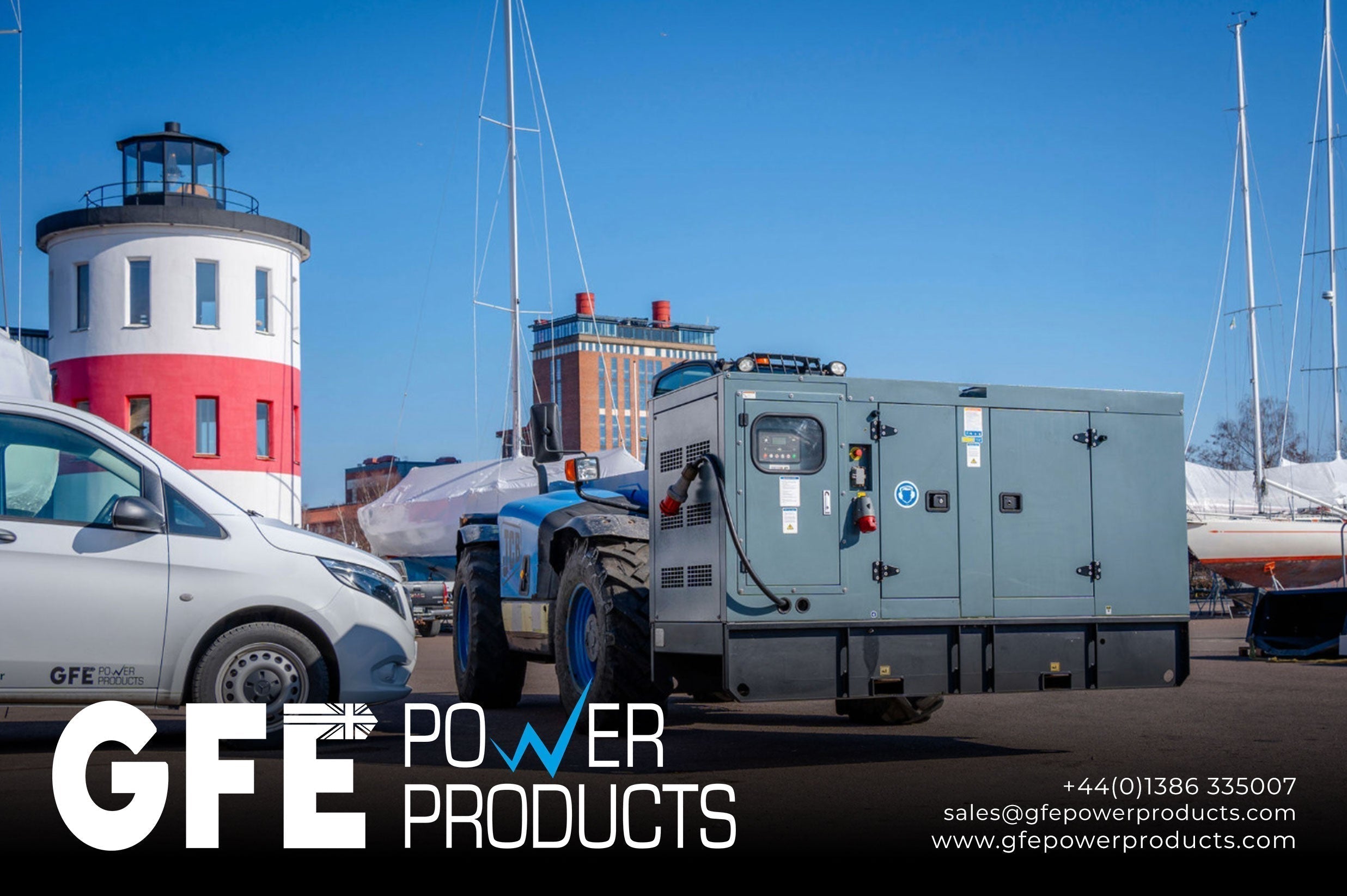
Preventing Backfeeding: How to Use Your Generator Safely
At GFE Power Products, we know that buying a new generator is more than a purchase, it's an investment in reliable power, peace of mind, and operational continuity. But even the most advanced generators can pose safety risks if not used correctly, especially when it comes to a hazard called backfeeding. In this article, we’ll explain what backfeeding is, why it’s dangerous, and how to prevent it with proper generator setup and usage.
Whether you're powering a remote site, supporting critical systems in a business, or preparing for emergencies at home, safe generator operation is non-negotiable.
What Is Backfeeding?
Backfeeding occurs when electricity flows in the opposite direction to its intended path, from your generator back into the utility grid. This typically happens when a generator is connected to a building's electrical wiring without being isolated from the main power grid.
In simpler terms, imagine plugging your generator into a household socket to power your home during an outage. If the main breaker hasn’t been turned off or a proper transfer switch isn’t in place, electricity from the generator can flow backwards through the power lines. This unexpected voltage can be extremely dangerous, or even fatal, for utility workers and anyone who comes into contact with lines presumed to be de-energised.
Why Backfeeding Is So Dangerous
Backfeeding puts both people and equipment at serious risk:
- Utility Worker Safety: Power line technicians often assume lines are dead during outages. Backfed electricity can re-energise lines, causing electrocution.
- Damage to Equipment: Backfeeding can overload both the generator and electrical infrastructure, leading to severe damage or fire.
- Legal Liability: If someone is injured due to improper generator use on your property, you could be held legally responsible.
That’s why understanding how to use your generator safely is essential, especially when integrating it into a building's electrical system.
How to Prevent Backfeeding: The Right Way to Use Your Generator
1. Always Use a Transfer Switch
The most important step in preventing backfeeding is to install a transfer switch, which safely isolates your generator from the grid. This device allows you to:
- Automatically or manually switch between utility and generator power
- Ensure power only flows in one direction
- Avoid electrical feedback into the mains
At GFE Power Products, we offer expert guidance on transfer switch selection and installation. For large installations, we can also recommend automatic transfer switches (ATS) that activate your generator when grid power is lost, ensuring a seamless and safe transition.
Learn more about our generator installation support and accessories.
2. Never Plug Your Generator into a Wall Socket
This is often referred to as “backfeeding through the dryer outlet” or “suicide cord” connection, and it’s both illegal and incredibly dangerous. This kind of setup bypasses essential safety features and makes backfeeding highly likely.
Instead, generators should always be connected via a transfer switch or direct wiring system approved by a certified electrician.
3. Follow Manufacturer Guidelines
Each generator model has its own setup and safety instructions. At GFE Power Products, we only supply new, high-performance diesel generators from trusted manufacturers. Every model includes detailed documentation to help ensure safe use.
If you’re unsure about your model’s safety protocols, our team is always here to help. Check out our generator support and technical resources for assistance.
4. Use Outdoor-Rated Extension Cords and Connections
When connecting appliances directly to a portable generator, only use:
- Heavy-duty, grounded extension cords
- Cords rated for outdoor use and amperage required
- Sockets with GFCI protection if possible
Also, make sure the cords are kept away from water, snow, and flammable materials. Proper cabling keeps your system safe and reduces the risk of overload or electrical shock.
5. Don’t Overload Your Generator
An overloaded generator can malfunction, damage connected appliances, or cause a fire. Know your generator’s wattage capacity and plan your energy use accordingly. Many of our new diesel generators are available in a range of sizes, from compact 10kVA units to industrial-scale 1000kVA systems, ideal for matching power output to your needs.
We can help you assess the right generator sizing for your home, business, or project. Contact our team for expert advice.
Additional Generator Safety Tips
- Store fuel properly: Use an approved container and store diesel in a cool, ventilated area away from ignition sources.
- Run generators outdoors only: Never operate a generator indoors or in a garage. Carbon monoxide buildup can be fatal.
- Ground your generator: Especially for larger units, grounding helps prevent electrical shocks in the event of a fault.
- Regular maintenance: Keep your generator in peak condition by following a maintenance schedule.
Work with Professionals You Can Trust
At GFE Power Products, we specialise in supplying new diesel generators that meet the latest standards in performance and safety. Our team works with businesses and individuals across the UK and beyond to provide:
- Tailored power solutions
- Professional setup guidance
- Nationwide delivery
- Ongoing support
Our UK-based distribution centre in Pershore is equipped to serve projects of all sizes, from farms and data centres to manufacturing plants and construction sites.
Don’t Take Shortcuts with Safety
Backfeeding is a real and avoidable danger. With the correct setup, proper equipment, and safe usage habits, you can eliminate the risk and get the best from your generator. Whether you’re installing a generator for emergency backup or powering an off-grid site, our team is ready to help you do it safely.
Ready to upgrade your power system? Explore our range of diesel generators and get in touch with our expert team.
For personalised support, give us a call at +44(0)1386 335007, email us at sales@gfepowerproducts.com, or WhatsApp us directly.



